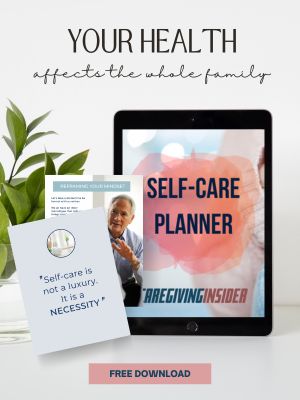
Setting Boundaries
Protect Your Peace
When you’re the go-to person for a loved one’s care, it’s easy to feel like you need to be available 24/7, answer every question, and manage everyone’s emotions—on top of managing medications and appointments.
But here’s the truth: Caregiving without boundaries leads straight to burnout. And the worst part? Most caregivers feel guilty even thinking about setting limits. If that’s you, take a deep breath. You are not selfish. You are not failing. And it’s okay to protect your peace.
Let’s talk about how to set healthy boundaries—around expectations, your time, and even medical access—without the guilt.
Why Boundaries Matter for Caregivers
Boundaries aren’t walls. They’re bridges between your needs and your responsibilities. They help you:
-
Stay emotionally and physically healthy
-
Create realistic expectations with others
-
Maintain your identity beyond caregiving
-
Prevent resentment and overwhelm
When you set clear, kind boundaries, you actually improve your loved one’s care because you’re showing up from a place of strength—not depletion.
Practice Setting These 3 Boundaries
1. Set Boundaries Around Expectations
What this looks like:
-
Clarifying what you can (and can’t) do on a daily basis
-
Letting family members know how they can help, instead of assuming you’ll do it all
-
Saying no to things that overextend you—even if others don’t understand
Example:
“I can attend the Fourth of July bbq and even make a side dish but I can’t help decorate.”
How to do it without guilt:
-
Be honest, not apologetic: “This is what I can offer right now.”
-
Focus on solutions, not excuses: “I can’t do this, but here’s what would help.”
-
Remember: You’re not responsible for everyone’s comfort—you’re responsible for your limits.
2. Set Boundaries Around Access to Medical Information
You may be the one attending all the doctor appointments, managing medications, and understanding your loved one’s care plan. That doesn’t mean you have to relay every update to every family member, every time.
What this looks like:
-
Choosing one communication method (group text, email, or app)
-
Setting a schedule for updates (e.g., once a week or after appointments)
-
Saying no to emotionally draining, repetitive conversations. Reinforce access to already established means of communications for updates.
Example:
“I’ll share a care update once a week via email so everyone stays in the loop.”
How to do it without guilt:
-
Remind yourself: You’re providing info, not managing emotions.
-
Set expectations clearly from the start—people will adjust.
-
Encourage others to speak to the medical team directly if they need more details.
3. Set Boundaries Around Your Time
As a caregiver, your schedule is full. That doesn’t mean every moment belongs to others. Your time deserves intention—and breaks.
What this looks like:
-
Blocking out personal time (even 20 minutes counts).
-
Not responding to calls or texts during rest periods.
-
Saying no to non-urgent tasks that can wait or be handled by someone else.
Example:
“I turn my phone off from 8–9 p.m. to recharge. I’ll get back to you after that.”
How to do it without guilt:
-
Trust that everything doesn’t have to be done by you.
-
Know that rest is part of caregiving—it helps you show up better tomorrow.
-
Recognize that “being available” 24/7 is unrealistic and unsustainable.
What If People Push Back?
They might. Some people won’t understand. Others might try to guilt or question you. That doesn’t mean your boundaries are wrong—it just means they’re working.
When people push back, try this:
-
Repeat your boundary calmly: “I understand, but I’m not available at that time.”
-
Stay consistent: boundaries need repetition to be respected.
-
Don’t over-explain: a simple “That won’t work for me” is enough.
Your Care Matters Too
Caregivers are often praised for being selfless—but that praise can quickly become pressure. You don’t have to give until there’s nothing left. You don’t need praise, you need support. Activate the people praising you. Ask them to do one small thing this week. Boundaries are a form of love—both for yourself and for the person you’re caring for.
Access FREE Dowloadable Guides
Our guides are FREE to family caregivers and those who are looking for ways to support a caregiver. Download them today.
Caregiver Action Plan - Our most comprehensive guide includes everything you need to perform a needs assessment, establish trackers, activate your community and schedule your own self-care.
Self-Care Planner - You can't forget to take care of yourself while caring for your loved one.
Hospital Packing Guide - This guide comes complete with checklists and links to some of our favorite items.
Gratitude Journal - A caregiver's mental and physical health will greatly impact the state of the entire household. Sometimes you may need a little prompt to recalibrate.






0 Comments